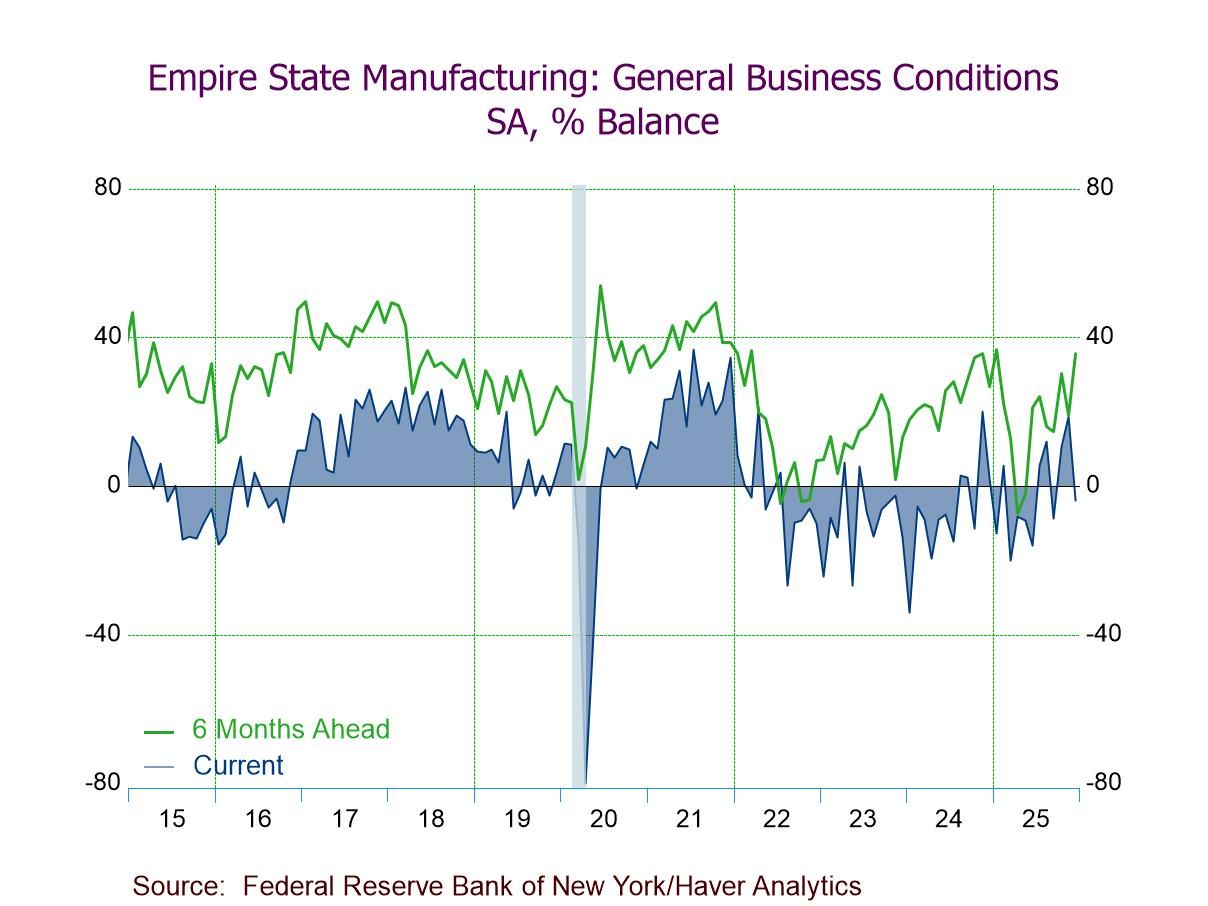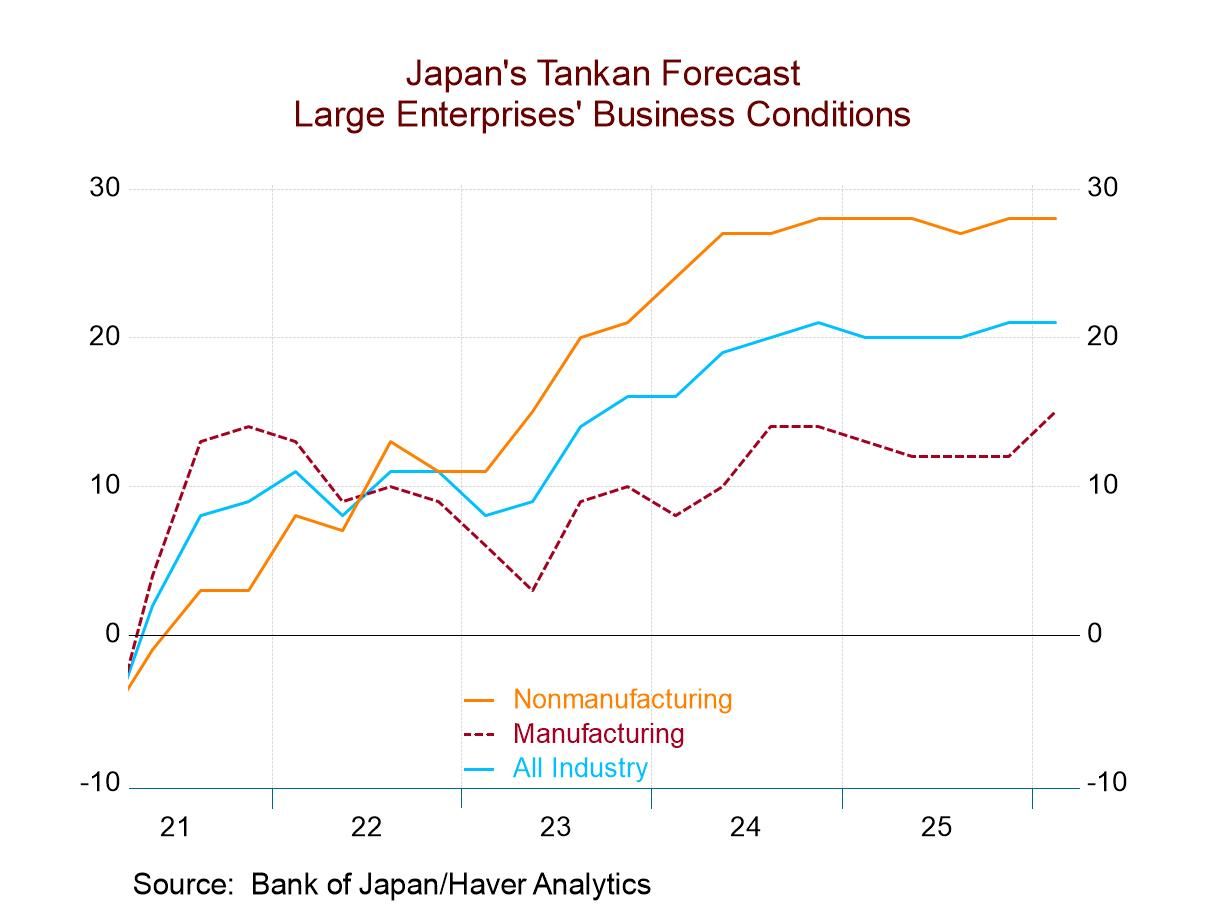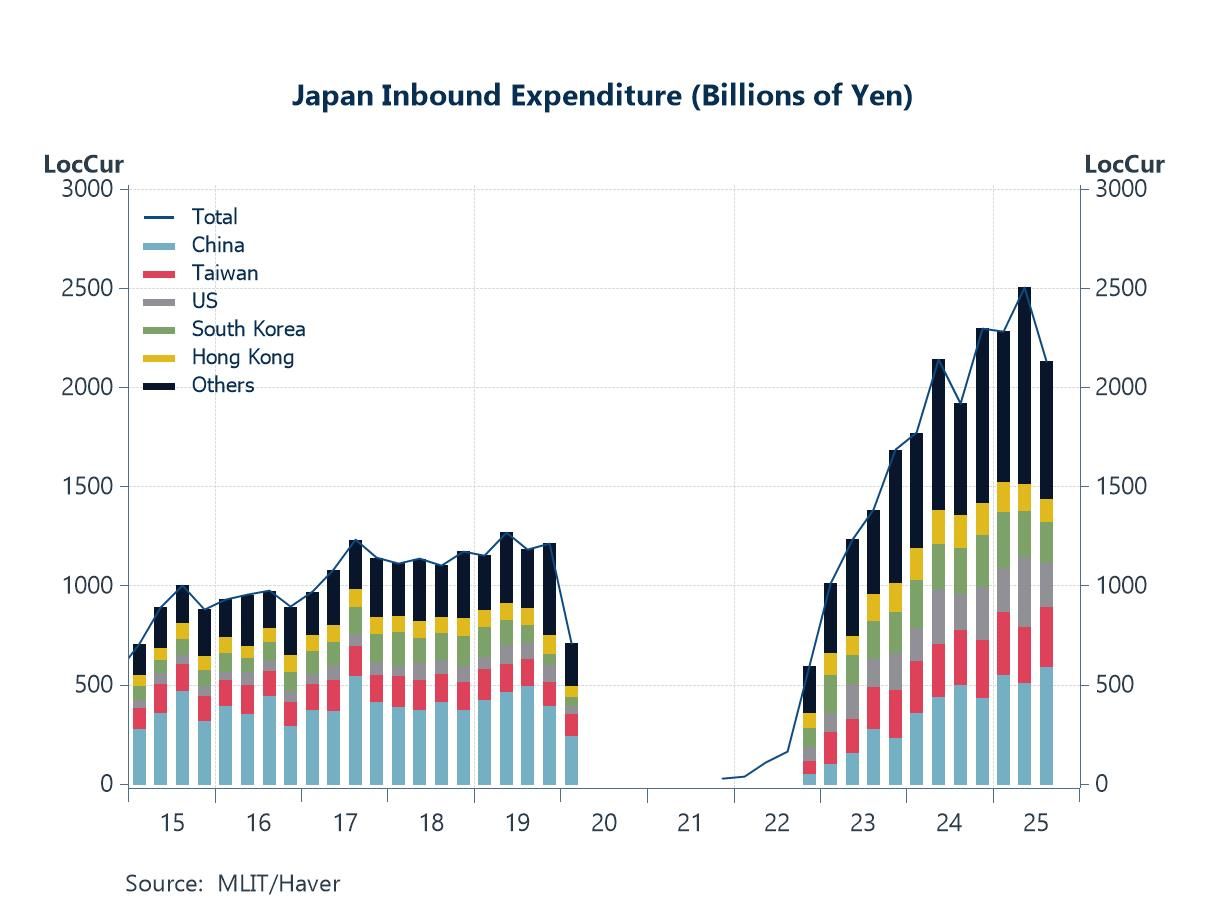 Global| Sep 09 2009
Global| Sep 09 2009Consumer Credit Outstanding Falls For An Unprecedented Sixth Straight Month
by:Tom Moeller
|in:Economy in Brief
Summary
The deteriorating job market and uncertain prospects for improvement, plus over-leverage from past spending, has prompted an end to the growth in consumer credit. The Federal Reserve reported late-yesterday that consumer credit [...]
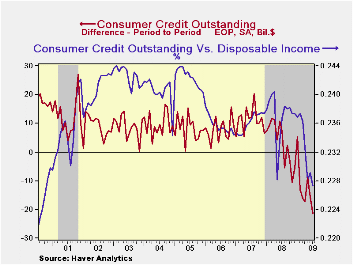 The
deteriorating job market and uncertain prospects for improvement, plus
over-leverage from past spending, has prompted an end to the growth in
consumer credit. The Federal Reserve reported late-yesterday that
consumer credit outstanding fell during July for the sixth straight
month and for the tenth month since last summer. Perhaps more
impressive, however, is the magnitude of the cutbacks. The $21.5B July
decline was the record for any one month and double-digit monthly
declines have prevailed all this year.
The
deteriorating job market and uncertain prospects for improvement, plus
over-leverage from past spending, has prompted an end to the growth in
consumer credit. The Federal Reserve reported late-yesterday that
consumer credit outstanding fell during July for the sixth straight
month and for the tenth month since last summer. Perhaps more
impressive, however, is the magnitude of the cutbacks. The $21.5B July
decline was the record for any one month and double-digit monthly
declines have prevailed all this year. 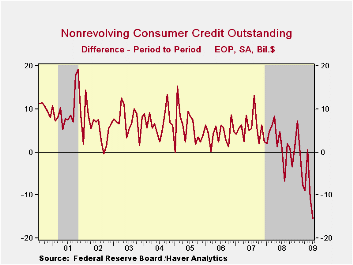 On a percentage basis the 4.2%
y/y decline is a record.
On a percentage basis the 4.2%
y/y decline is a record.
Usage of non-revolving credit (autos & other consumer durables), which accounts for nearly two-thirds of the total, fell a record $15.4B after a $10.7B June drop. Except for the mid-1970s, these declines were enough to pull the retrenchment to near the record for a two-month period in dollar terms as well as on a percentage basis. The 2.6% y/y decline is near the record. Additionally weighing on overall credit has been the tight rein on revolving credit usage. During July, revolving credit outstanding fell $6.1B for the tenth consecutive monthly drop. In percentage terms the decline pulled the outstanding total down a record 7.1%.
Despite
these huge declines, there arguably is more to come. Consumers have
been successful in reducing credit outstanding as a percentage of
disposable income to 22.7% from its 2005 high of 24.4%. 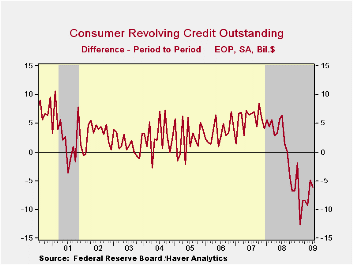 However, these
levels compare to the lows near 16% in the early-1990s. Now that the
"shop-till-you-drop" mantra has been diffused by the aging population
of the U.S., a return to some lower level of credit usage is likely.
However, these
levels compare to the lows near 16% in the early-1990s. Now that the
"shop-till-you-drop" mantra has been diffused by the aging population
of the U.S., a return to some lower level of credit usage is likely.
These figures are the major input to the Fed's quarterly Flow of Funds accounts for the household sector.
Credit data are available in
Haver's USECON database. The Flow of
Funds data are in Haver's FFUNDS database.
The latest Beige Book from the U.S. Federal Reserve Board can be found here.
The Credit Crisis and Cycle-Proof Regulation from the Federal Reserve Bank of St. Louis is available here.
| Consumer Credit Outstanding (m/m Chg, SAAR) | July | June | Y/Y | 2008 | 2007 | 2006 |
|---|---|---|---|---|---|---|
| Total | $-21.5B | $-15.6B | -4.2% | 1.6% | 5.6% | 4.1% |
| Revolving | $-6.1B | $-4.9B | -7.0% | 1.9% | 7.8% | 5.0% |
| Non-revolving | $-15.4B | $-10.7B | -2.6% | 1.4% | 4.4% | 3.6% |
Tom Moeller
AuthorMore in Author Profile »Prior to joining Haver Analytics in 2000, Mr. Moeller worked as the Economist at Chancellor Capital Management from 1985 to 1999. There, he developed comprehensive economic forecasts and interpreted economic data for equity and fixed income portfolio managers. Also at Chancellor, Mr. Moeller worked as an equity analyst and was responsible for researching and rating companies in the economically sensitive automobile and housing industries for investment in Chancellor’s equity portfolio. Prior to joining Chancellor, Mr. Moeller was an Economist at Citibank from 1979 to 1984. He also analyzed pricing behavior in the metals industry for the Council on Wage and Price Stability in Washington, D.C. In 1999, Mr. Moeller received the award for most accurate forecast from the Forecasters' Club of New York. From 1990 to 1992 he was President of the New York Association for Business Economists. Mr. Moeller earned an M.B.A. in Finance from Fordham University, where he graduated in 1987. He holds a Bachelor of Arts in Economics from George Washington University.



